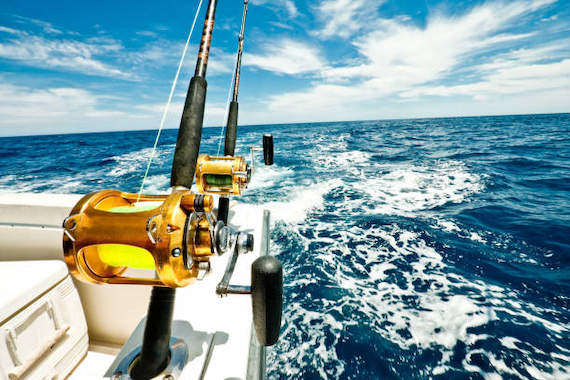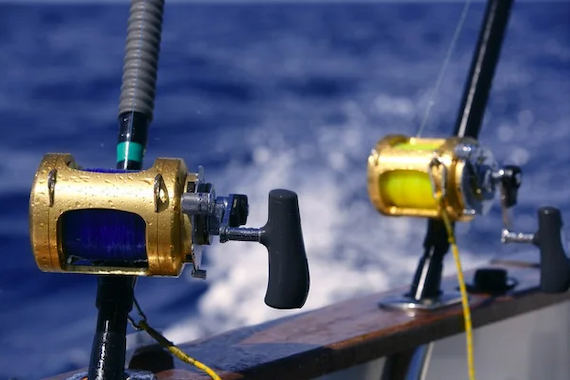When it comes to ocean fishing, spinning saltwater reels are indispensable to anyone who wants to succeed as an angler. Reels are the link between anglers and their prey, whether they’re battling large game fish or taking the abuse of saltwater. Getting it wrong might make it a little bit more difficult for you to catch that golden fish. And on top of that, having to replace reels time and time again may be very expensive.
Don’t worry as that’s what we’re here to prevent. We’re going to talk about the world of saltwater fishing reels in this post by looking at the various types available, the most critical things to look for, and how important they are in saltwater fishing. You’ll be all set to choose the right one for you and get on the water after reading this!
Why Saltwater Requires a Different Kind of Reel
Can you use any spinning reel in saltwater? Saltwater is a unique challenge for fishing gear. It corrodes and will wear out parts that are not specifically designed to overcome its challenge. While freshwater reels may look or even perform well enough, they normally do not have the internal seals and material to survive salt conditions for an extended period of time. The result is usually rusty bearings, sandy drag, and compromised performance in a short number of uses.
Conversely, a convenient saltwater spinning fishing reel is designed to prevent the above. The manufacturers use corrosion-proof materials such as anodized aluminum or stainless steel. Inner components, such as the drag system and bearings, are sealed to keep out salt and water. These factors guarantee that your reel will provide smoother action despite constant exposure to saltwater.
Understanding the Basics of a Saltwater Spinning Reel
A spinning reel consists of a spool, drag system, bail, handle, and housing. In saltwater models, all of them are made strong to withstand tougher environments. The drag system is sealed with heat- and pressure-resistant materials in the shape of carbon or composite washers. The bail arm is designed to have high durability, especially when casting heavier lures or handling thicker lines.
The main body is yet another crucial part. While some reels use graphite for weight saving, others rely on full-metal frames for added stiffness. Each has its merits, but when it comes to saltwater use, metal frames usually provide better long-term stability, particularly when fighting larger fish.
Choosing the Right Reel Size for Your Fishing Needs
Size comes into play while choosing a spinning reel when saltwater fishing. Smaller reels between the 3000 to 4000 models work for light inshore fishing. They will perform well on species like flounder, sea trout, or mangrove snapper. If you’re fishing for slightly bigger species like redfish or small tarpon, scaling up to a 5000 or 6000 reel gives you the line capacity and drag muscle that you need. Offshore fishing often demands even larger reels. Sizes 7000 upwards are ideal when catching tuna, amberjack, or grouper. These reels can withstand thicker line and more pressure from the water and the fish alike.
Gear Ratio and Drag: Two Numbers You Should Understand

Gear ratio refers to how fast your reel reels in line. The higher the ratio, the faster the retrieval – a 6.2:1 ratio, for instance. That comes in handy when fishing with fast lures or keeping up with fast-swimming fish. However, a slower ratio, such as 5.1:1, is more torquey. That’s more suited to deepwater jigging or where draw power is more desirable than speed.
Drag is yet another important factor. It controls how much resistance the fish feels when it is pulling on the line. Proper, smooth drag holds the line in place against breakage and tires strong fish out during the fight. The majority of saltwater reels are constructed for dragging pressure levels of 15 to 30 pounds, although the range varies according to size and model.
The Importance of Line Capacity and Construction Materials
Line capacity should match the type of fishing you’re doing. Long runs are common in saltwater, especially when larger fish are involved. If your spool runs out of line mid-fight, your chances of landing the fish drop significantly. Look for reels that support the appropriate length and type of line for your target species.
Also, consider the spool material. Anodized aluminum is a favorite since it’s corrosion-resistant and tough. Some reels are even braid-ready, so anglers can spool braided line without the need for a monofilament backer. This provides convenience and versatility.
Popular Reel Brands That Consistently Perform
Certain brands always top the chart in saltwater spinning reels. Daiwa reels are favored for smoothness and consistency, especially in mid-range models fished both inshore and offshore. Shimano is generally renowned and respected for its precision engineering and sealed drag systems.
For anyone interested in learning why their reels are constructed the way they are, learning about the benefits of Shimano reel construction is a good starting point. Penn has earned a reputation for building durable reels that hold up against a lot of saltwater fishing. They also offer a number of choices for beginners and professionals.
Maintenance Makes the Difference
A decent saltwater reel is an investment, and some care will pay dividends by extending its life quite a long way. Fresh water rinsing after every use is a must. Steer clear of powerful sprays that can push the salt further into the reel. A gentle rinse, followed by a wipe-down and drying in a shaded place, will work wonders. Inspect the reel periodically when venturing out, and grease the gears and oil the handle shaft.
Hooked on the Right Reel Yet?
Choosing the right saltwater spinning fishing reel is actually a question of understanding your conditions, target, and performance parameters most critical to you. Sturdiness, line capacity, quality drag, and corrosion resistance are not nice-to-have; they’re essentials for saltwater fishing success. When you’re properly equipped with the right reel, you’ll have an easier time handling the ocean’s conditions and spend more time on the water and less in the shop.


